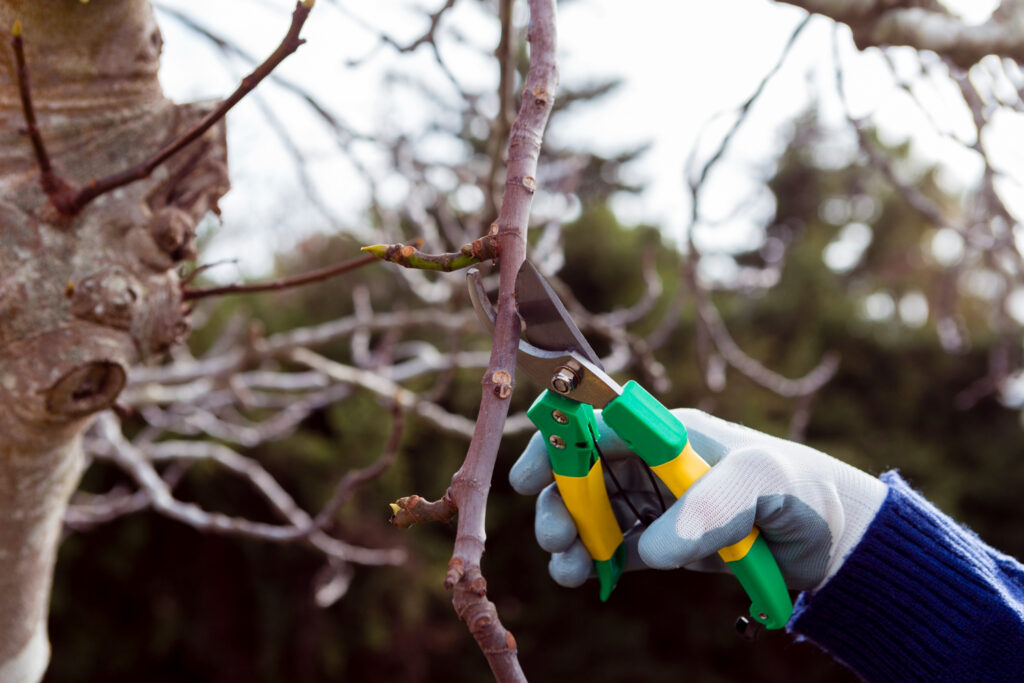Keeping trees healthy is important for a thriving garden. Trees, like people, can get sick. Diseases can cause leaves to wilt, branches to die, or bark to peel. If you catch these issues early, you can protect your trees and keep your yard looking great.
Understanding tree diseases helps you act quickly and effectively. Some signs are easy to see, like unusual spots on leaves or strange growths on branches. Others might take a little more detective work. Knowing what to look for can make all the difference.
By learning more about tree diseases, you’ll be better prepared to tackle any problems. Whether it’s a fungal infection or pesky pests causing trouble, being informed is your first step. With the right knowledge and care, you can keep your trees strong and healthy all year round.
Identifying Fungal Tree Diseases
Fungal infections are common in trees and can cause visible changes or damage. These infections often thrive in environments where moisture levels are high and air circulation is poor. Recognizing fungal diseases early can save your trees and prevent the spread to other plants.
Signs of Common Fungal Infections:
- Leaf Rust: Look for orange, yellow, or red spots on leaves. These spots can expand, leading to leaf drop.
- Powdery Mildew: This infection appears as a white or gray powder on leaves and stems. It is most common in shady areas.
- Root Rot: Often caused by waterlogged soil, it leads to wilting, yellowing leaves, and stunted growth.
To prevent fungal infections, ensure trees have good air circulation and proper water drainage. Pruning helps by removing infected branches, allowing light and air to flow freely. For treatment, fungicides can be applied at the first sign of disease to halt its spread.
However, always follow the label instructions and consider seeking advice from a tree care specialist if the problem persists.
Recognizing Bacterial Tree Infections
Bacterial infections can be challenging to detect but are just as damaging as fungal diseases. These infections often reach trees through wounds on bark or leaves. Understanding their symptoms helps you take timely action to protect your trees.
Symptoms of Bacterial Diseases:
- Bacterial Leaf Spot: Small, dark water-soaked spots on leaves may grow and cause leaf fall.
- Fire Blight: Affected branches look scorched or burnt, with blackened leaves that cling to branches.
- Crown Gall: Causes tumor-like growths on roots, trunks, or branches, obstructing nutrient flow.
To manage bacterial diseases, it’s essential to prune away affected areas promptly using sterilized tools to avoid spreading bacteria. Copper-based sprays can be effective as a preventative measure but may need repeated applications.
Ensuring trees are healthy and nutrient-rich helps them resist infections. Always maintain a clean garden, as fallen leaves and debris can harbor bacteria, increasing the risk of spreading.
Spotting Tree Viral Diseases
Viral diseases can be a bit trickier to handle because there’s no cure once a tree gets infected. These viruses spread through insects, contaminated tools, or root grafts. While they don’t always kill trees quickly, they weaken them over time.
How Viral Diseases Affect Trees:
- Leaf Curl: Leaves may become twisted or curled, affecting photosynthesis and leading to poor growth.
- Stunted Growth: Trees might stop growing as they should, making branches and leaves smaller than normal.
- Mosaic Patterns: Irregular color patterns like yellow, white, or light green spots appear on leaves.
Mitigating the impact of viral diseases involves several steps. Maintaining good hygiene in your garden by using sanitized tools can reduce the chance of spreading viruses. Control insect vectors like aphids and leafhoppers, which transmit viruses from tree to tree.
If a tree shows severe symptoms, removing it can prevent the virus from reaching nearby trees. Supporting tree health through proper watering and nutrition helps trees better cope with the virus.
Understanding Tree Pest Problems
Pests are a common issue for trees and can cause significant damage if not managed promptly. Pests can range from insects like beetles and aphids to larger creatures like rodents. Identifying pest problems early helps prevent widespread damage to your trees.
Indicators of Pest-Related Issues:
- Chewed or Missing Leaves: Holes in leaves or entire leaves eaten off indicate insect feeding.
- Bark Damage: Look for holes, sawdust-like frass, or peeling bark, which could point to wood-boring insects.
- Sticky Residues: The presence of honeydew, a sticky substance, suggests sap-sucking pests like aphids or scale insects.
Control methods vary based on the type of pest. Natural options include introducing beneficial insects like ladybugs or using neem oil sprays to deter pests. Chemical insecticides can be effective for heavier infestations, but be sure to follow usage directions to avoid harm to beneficial organisms.
Regular monitoring and maintenance are key to catching pest issues early and taking appropriate action.
Conclusion
Caring for trees means staying vigilant against common diseases and pest problems. By learning to recognize signs of trouble and taking timely action, you ensure the health and longevity of your trees. Healthy trees not only beautify your landscape but also contribute to a balanced ecosystem.
If you’re dealing with tree diseases and need professional tree services in Marietta, GA, contact One Two Tree. Our team is ready to assist with expert tree care solutions, ensuring your landscape remains safe and thriving. Let us help you protect and nurture your trees for years to come!

